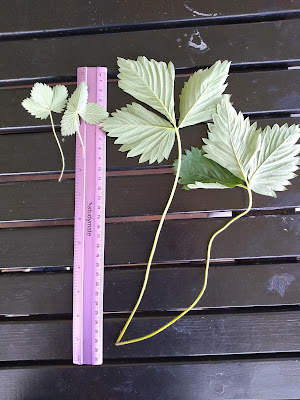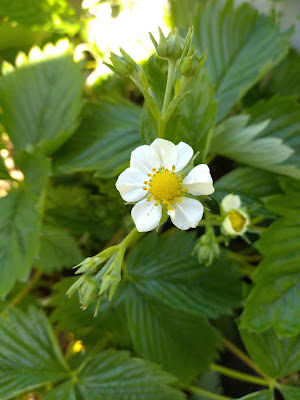For over a dozen years I have been trying to find somewhere to by a "Cambridge Rival" strawberry plant. I have heard so much about them. Cambridge Rival are meant to be the best tasting strawberries in Australia.
Diggers used to have them, but I have had such bad experiences with Diggers on many many occasions, plus their prices are unreasonable for low quality plants, and postage price is incredibly high, that I really didn't want to buy anything from them if I could help it. I looked around, and asked around, but had no success.
As it has been so many years of searching and I have had no success I decided to bite the bullet, spend a fortune to buy a plant from Diggers, and hope they did not send me the wrong plant that had been mis-labelled, or a dead plant, or a plant covered in mildew, or any of the other nonsense that they have repeatedly done in the past when I have bought from them. Strangely enough, I looked one day and they had them listed but the following day when I was planning to complete my order they had been removed from their list. I guess it wasn't meant to be.
I kept looking, and asking around, and eventually found a home gardener who grew Cambridge Rival strawberries and sent me some plants.
 |
| Cambridge Rival strawberry |
Cambridge Rival strawberries have white flowers and can either self pollinate or be pollinated by another variety. Cross pollination does not change the taste. They are said to throw a lot of runners but my plants have not done much of that yet. They are only meant to crop once or twice per year in my climate, which is a down side of this variety.
My plants survived winter and flowered in spring. The first berries ripened early December. A second flush of fruit ripened in February. The berries were mid-sized, and red. The colour of these was nice, even the inside of the berries was rather red. The berries themselves were nice and soft, making them unsuitable for commercial harvest but perfect for the home grower. They smelled rather nice for a garden strawberry, which was novel.
The taste of Cambridge Rival strawberries was incredible and unrivaled by anything else I grow. They were intensely sweet, and pretty sour, at the same time. They had a depth of flavour that I really enjoy. The texture of these was very soft. It sounds cliched but they did sort of melt in my mouth. I have only eaten them perfectly ripe, I have no idea what they taste like a day or two before being ripe.
The richness of flavour, combined with the nice strawberry smell and the texture makes Cambridge Rival my favourite strawberries.
I have saved some of their seeds and should plant them at some stage. Seeds that were self-pollinated will not produce Cambridge Rival strawberries. These are octoploid and largely heterozygous, meaning every seedling will be genetically unique. While most seeds will not be as good as the parent, some may be much the same, and there is a chance that some may be even better.
At some stage I need to track down a good day-length neutral strawberry and cross it with Cambridge Rival in the hopes of producing a day-length neutral strawberry that is of similar quality to these.
 |
| Cambridge Rival strawberries with insect damage |
As you can see from the berries in the background of the above picture, other things also like to eat these strawberries. I grow everything organically, so the earwigs and slaters tend to get into my strawberries. This frustrates me greatly. There isn't much I can do unless I spray, and I am not keen on spraying, so I have to put up with it.
Given how difficult Cambridge Rival strawberries were to track down, and how great they taste, I plan to let my plants throw as many runners as they want. If I ever have a few spare plants I will offer them through my for sale page. I can't imagine I will ever have too many extras of these though as I really want to grow a lot more of them myself!












































































